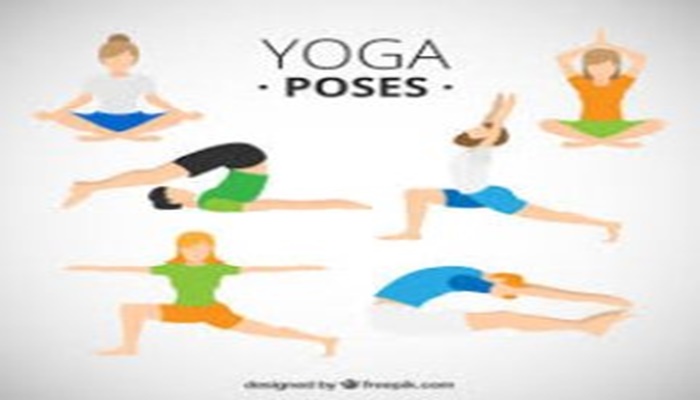
Eight steps are a consistent course of teaching the ethical, physical and metaphysical aspects of yoga, which underlies most of the current trends. It is assumed that by mastering these levels, the student will eventually achieve the main goal – liberation. For him, the earthly life, full of suffering, will end, and another, serene existence will begin. However, to worry that yoga teaches quick death, it is not worth it, rather it helps to prolong earthly life in order to enable the attainment of liberation in the current incarnation.
The first two steps, pit, and niyama, are the ethical rules of yoga, which necessarily precede “asanas,” that is, physical exercises.
1. The pit
The pit includes five principles. The first principle – ahimsa – teaches us not to harm living beings. The second principle – Satya – truthfulness – is abstinence not only from lies but also from self-deception. The third principle is asteya – the non-appropriation of the stranger, the prevention of theft. The fourth – Aparigraha – refusal to possess unnecessary things, from money-grubbing. The fifth – brahmacharya – abstinence, detachment from sensuality in a broad sense. It should be noted that different teachers of yoga tend to give different interpretations to the principles: thus, brahmacharya can be considered in one tradition full sexual abstinence, and in the other – sexual moderation, which allows affinity with one partner.
2. Niyama
Next step, niyama, moves from constraints to recommendations. It is believed that with the mastery of the first stage of yoga, the disciple’s consciousness is freed from vices and is ready to accept virtues, among which five are also distinguished.
- Shaucha – purity, external and internal.
- Santosh – satisfaction with what you have.
- Tapas – diligence in practice, self-discipline.
- Svadhyaya – self-knowledge, and study of spiritual literature.
- Ishvara-pranidhana – entrusting oneself to the Upper Beginning, dedicating the fruits of all your actions to the divine power.
In addition, in some other traditions, additional principles of niyamas are also indicated: saumanasya (benevolence), Niagara (impassivity), man-dhatar (thoughtfulness), avasa (independence), mantra-vidya (knowledge of mantras), damsanavant (possessing extraordinary power) and nishpratidvandva (rejection of the presence of opponents).
3. Asanas
Next, the practitioner proceeds to the asanas– exercises corresponding to the third stage. Asanas are needed for body training. The utilitarian approach: a healthy person can easily carry a fixed-sitting clock in meditation. Ability to concentrate on the sensations in the muscles facilitates the process of mastering meditative techniques, and the elongated spine and the open joints facilitate alignment of internal energy channels.
The list of obligatory asanas “Yoga Sutras” of Patanjali is not given, but they are given by other sources, for example, “Hatha Yoga Pradipika” (dated XV-XVI centuries AD). Here the asanas are formed in certain sequences beginning with the cycle Surya Namaskar (“Salutation to the Sun”), repeated several times. Then follows standing poses, slopes, postures sitting, lying down, inverted poses and completing Shavasana. So, regularly practicing asanas and making your body hardy,
4. Pranayama
Pranayama – the fourth stage of yoga, is dedicated to the management of the primary energy of the universe, the prana. Pranayama teaches you to control breathing with the help of special techniques. Alternating deep, medium and shallow breathing, actively using the expiration on exhalation and inspiration, and also directing the breath to certain parts of the body, the yogi accumulates vital energy and uses it for his own purposes. All cells of the body (including the brain) in the process of respiratory gymnastics receive a huge amount of oxygen.
Simultaneously with calming the mind and relaxing the body (pleasant “side effects” from the techniques of pranayama), the vital force accumulates. It is important that in the process of mastering each successive stage of yoga, the previous one is not forgotten. All knowledge develops and complements each other. So, having mastered the techniques of pranayama, the disciple can use them for faster progress in asanas: the body warmed by the breath becomes more flexible and obedient.
5. Pratyahara
The fifth stage of yoga is pratyahara, the practice of distraction of the senses from the objects to which they are directed, the retention of the state “here and now”. To perceive what is happening, but not to allow the mind to be fixed either on external or internal objects, is the main task of the yogi at this stage.
Comprehending pratyahara, the disciple begins to perceive all phenomena without pricelessness, free from the influence of emotions and feelings and remains alone with his consciousness. It is the fifth step, simplistically speaking, the transition from “applied” yoga to “speculative” spiritual practices.
6. Dharana/ 7. Dhyana/ 8. Samadhi
The next step is dharana, the total concentration of the mind on any one object. A bustling stream of thoughts stops, the mind does not jump from subject to object and consciousness is unidirectional. Deep concentration on one object for 12 seconds is dharana, and 12 such dharan is already dhyana, the seventh step of yoga.
At this stage, the yogin only realizes that he exists, and that which is the object of his meditation. The persevering practice of dharana and dhyana ultimately leads to the final step of the eightfold path – samadhi, the state of superconsciousness, on which the perceiving and perceiving entity appears, and the individual consciousness (as a microcosm) merges with the cosmic absolute (macrocosm). The state of samadhi precedes complete liberation – from suffering caused by the desires of a restless mind, and from rebirth.
Yoga – an ancient, profound, powerful in its potential impact of teaching, and everyone can learn from it whatever they want. Today, the doctrine is crumbled into many simple and applied techniques. Yoga for weight loss, yoga for pregnant women, yoga for sight, yoga for more effective training in any sport …
Whichever yoga school you choose, it is important to remember that neither tracts, nor teachers will force you to become an austere ascetic, take vegetarianism, sing hymns to some gods, or spin into a bagel without good reason. This is not a means, and not a goal. But they will definitely make you pay attention to your life, not just your posture. Fatigue and fuss come from where? Why such a heap of thoughts, things and affairs? What really means “relaxation”, or “acceptance”, or “the importance of the process, not the result”? All that yoga teaches is awareness, responsibility, and tranquility. “Yoga Chitta vrtti nirodha” – “Yoga is the stopping of mental vibrations”.


